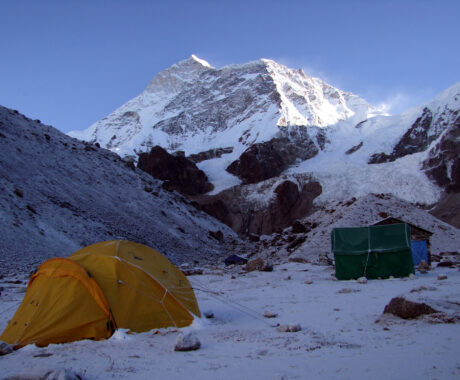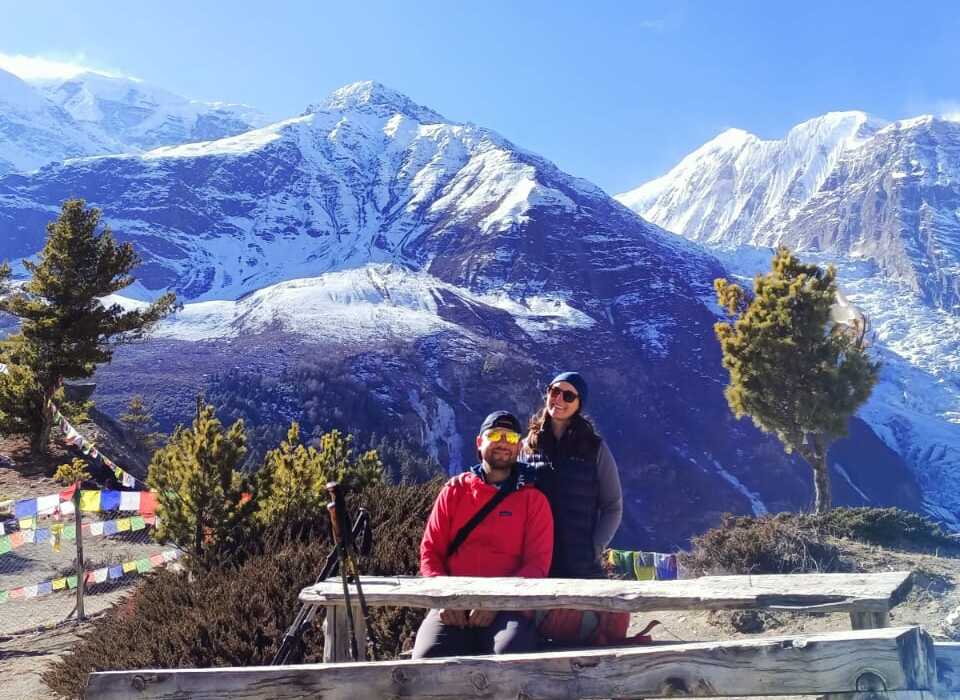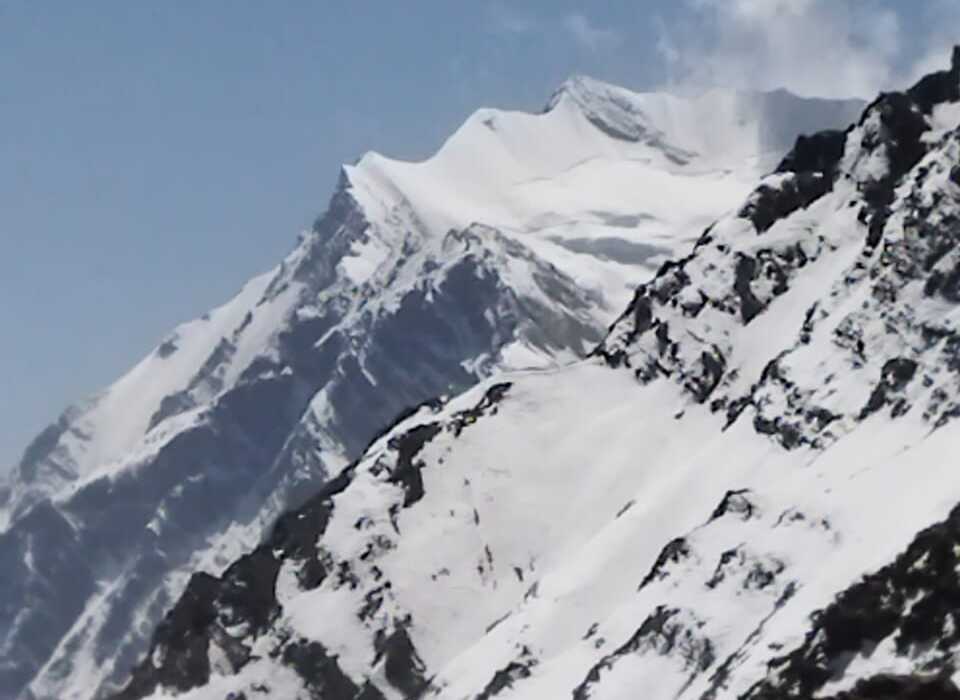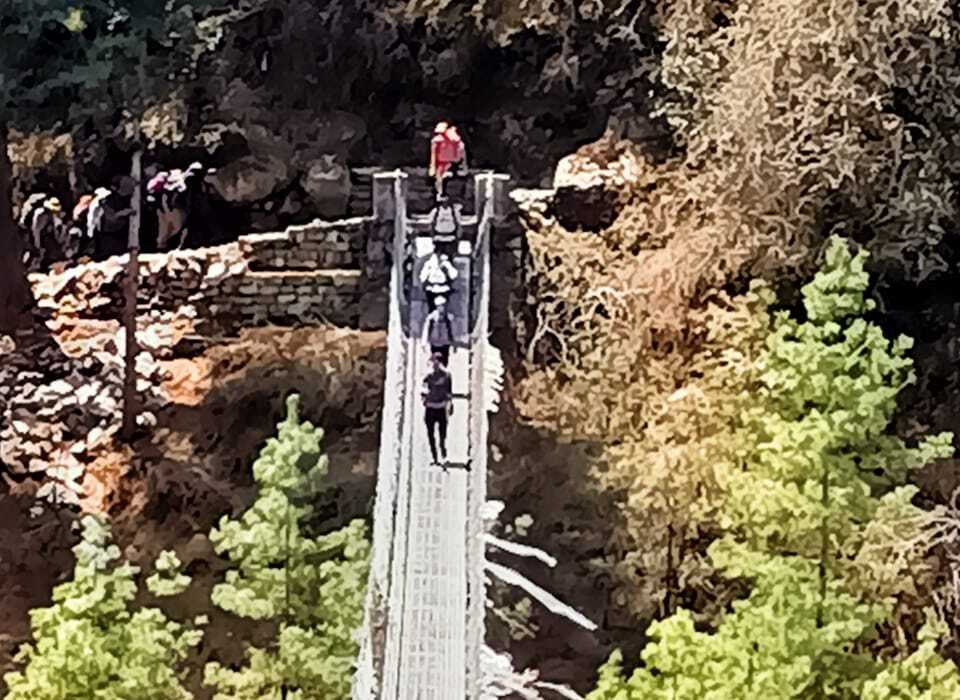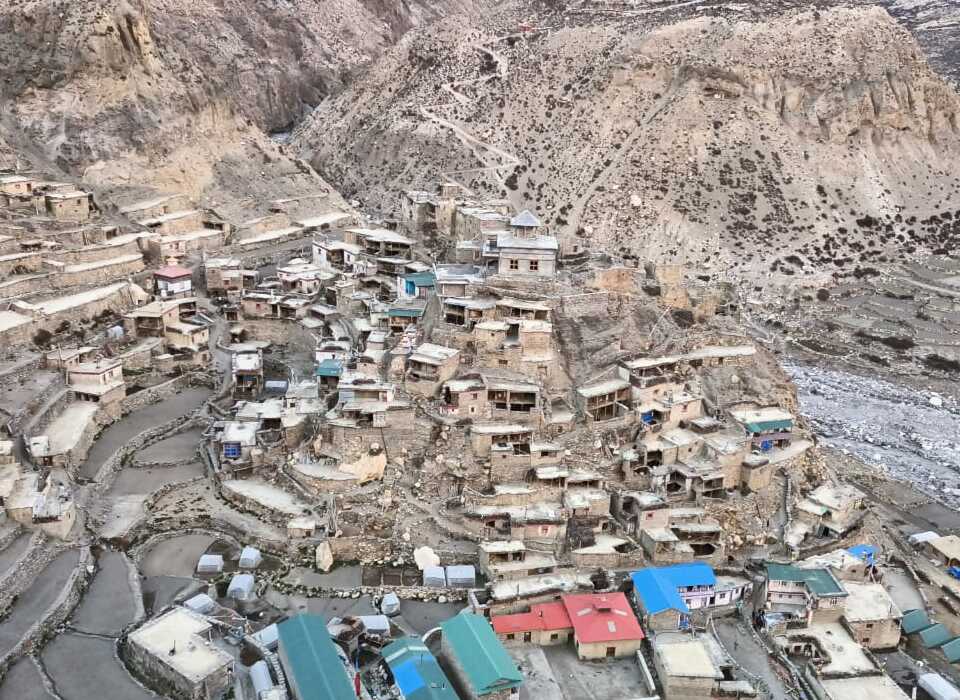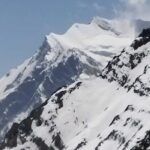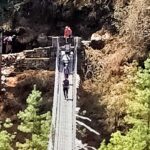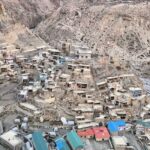Annapurna Three High Passes trek
Trip Facts
- Destination Annapurna Region Nepal
- Activity Trekking
- Duration 29 Days
- Trip Difficulty moderate_strenuous
- Max. Altitude 5550m
- Best Time Sep to Dec & March to May
- Start and End Kathmandu - kathmandu
- Meals Breakfast / Lunch / Dinner
- Accommodation 5 star Hotel in Kathmandu & Pokhara / Tea house
- Group Size 2 - 10
- Transportation Private transport
Trip Highlights
- Enjoy the classic adventure climb on top of Nepal’s highest Chulu East Peak
- On scenic trail of Annapurna Circuit with constant views of magnificent peaks
- Travel beside the Marsyangdi River's flow of crystal-clear water
- Walk through lovely villages adorned with ancient cultural heritage of Buddhism
- From mainstream to off the beaten tracks towards Chulu East Peak base camp
- Stand on the summit of Chulu East Peak overlooking mind-blowing scenery
- Stroll along the Annapurna trekking trail's distinctive landscape while taking in views of Lamjung, Macchapuchre, Gangapurna, and Tilicho Peak
- Discover the forbidden and isolated Nar and Phu settlements while traveling through breathtaking gorges and canyons
- Visit the monasteries in the Manang district, Sher Gompa, Tare Gompa, and Braga Gompa
- Experience the possibility to see wildlife including as blue sheep, musk deer, Tibetan wolves, and leopards in the Annapurna Conservation Area, a hotspot for biodiversity
Introduction
RP Adventures, a reputable and experienced company in organizing treks in Nepal, offers a meticulously planned itinerary for the Annapurna Three High Passes Trek. This trek is designed for the adventurous soul seeking to explore the beauty and challenges of the Himalayas. The journey typically spans over 25 to 29 days, depending on weather conditions and the pace of the trekking group with Camping and Tea House.
Starting from Kathmandu, the capital city of Nepal, trekkers are transported to the starting point of the trek, usually after a scenic drive or a short flight to Pokhara, followed by another drive to the actual trailhead. The trek begins in earnest from a lower elevation, gradually ascending through diverse terrains, including lush forests, terraced fields, and alpine meadows, before tackling the high passes.
The first major challenge is the Nagmun La pass (5,555 m), which serves as a stunning introduction to the high-altitude trekking experience. The views from the top are nothing short of spectacular, offering a panoramic vista of the Annapurna range. The trek continues towards the Kang La pass (5,350 m), which is known for its breathtaking landscapes and the unique opportunity to witness the traditional lifestyle of the local communities living in remote mountain villages.
The final high pass, Mesokanto La (5,250 m), is perhaps the most challenging but also the most rewarding. The pass offers unparalleled views of Tilicho Lake (4,900 m), one of the highest lakes in the world, and the surrounding snow-capped peaks. The descent from Mesokanto La marks the beginning of the journey back to civilization, but the memories of the majestic mountains linger long after.
One of the unique aspects of trekking with RP Adventures is their commitment to providing an authentic Nepalese experience. This includes opportunities to interact with the local people, taste traditional Nepalese food, and learn about the culture and traditions of the Himalayan region.
The Annapurna Three High Passes Trek with RP Adventures is not just a physical journey but a voyage of discovery. It challenges trekkers to push their limits while immersing them in the natural beauty and cultural richness of Nepal. It’s an adventure that leaves a lasting impression, inspiring a deep respect for the mountains and their inhabitants.
Annapurna Three High Pass Difficulty
The difficulty of the Annapurna Three High Passes Trek is considered to be strenuous. It is designed for trekkers who have previous high-altitude trekking experience and a good level of physical fitness. Several factors contribute to its challenging nature, including:
Altitude: The trek involves crossing three high mountain passes, all above 5,000 meters (16,400 feet), with the highest, Mesokanto La (5250 m), reaching approximately 5,121 meters. The high altitude increases the risk of acute mountain sickness (AMS), which can be mitigated through proper acclimatization and hydration.
Terrain: The trail encompasses a variety of terrain, including steep ascents and descents, rocky paths, and potentially snow-covered trails, especially near the passes. The variability of the terrain requires good balance, agility, and endurance.
Weather Conditions: The weather in the Himalayas can be unpredictable, with sudden changes that can include heavy snowfall or rainfall, strong winds, and temperature drops, especially at high altitudes. Being prepared with the right gear and clothing is essential.
Remoteness: Much of the trek traverses through remote areas where facilities are basic and immediate medical help may not be readily available. Trekkers must be self-sufficient and prepared to deal with any emergencies with the resources at hand.
Duration and Daily Distance: The trek typically spans over 29 days, with daily walks of 6–8 hours. The long duration, combined with the physical demands of the trek, requires excellent stamina and mental fortitude.
Outline Itinerary
Day 01: Arrival in Kathmandu airport and pickup to hotel – 1,300m
Day 02: Kathmandu sightseeing day – 1,300m
Day 03: Drive from Kathmandu to Pokhara or Drive to Pokhara 850m – 08 hrs
Day 04: Drive to Siklas Village 1,980m – 03 hrs
Day 05: Trek to Forest camp 2,200m – 05 hrs
Day 06: Trek to Darmasala 3,540m – 06 hrs
Day 07: Rest day in Darmasala – 3,500m
Day 08: Trek to Boksi taal 4,000m – 06 hrs
Day 09: Trek to Trek to Numun la Base camp 4,800m – 06 hrs
Day 10: Trek to Numun la Phadi Vai Numun la Bhangjung 5,550m – 08 hrs
Day 11: Trek to Koto 2,500m – 05 hrs
Day 12: Trek to Meta 3,500m – 08 hrs
Day 13: Trek to Phu gaou 4,050m – 08 hrs
Day 14: Rest day in Phu gaou 4,050m hike to Hemlung base camp – 06 hrs
Day 15: Trek to Nar Phadi 3,500m – 07 hrs
Day 16: Trek to Nar gaou 4,350m – 04 hrs
Day 17: Trek to Nawal 3,750m vai Khang la pass 5,340m – 09 hrs
Day 18: Trek to Manang 3,550m – 03 hrs
Day 19: Rest day in Manang – 3,500m
Day 20: Trek to Shreekharka 4,000m – 06 hrs
Day 21: Trek to Tilicho tal 4,950m – 05 hrs
Day 22: Trek to Chari kharka 4,000m – 08 hrs
Day 23: Trek to Jomsom 2,700m – 07 hrs
Day 24: Drive to Tatopani 1,400m – 04 hrs
Day 25: Drive to Pokhara 850m – 05 hrs
Day 26: Drive to Kathmandu 1,300m – 08 hrs
Day 28: Rest Day in Kathmandu – 1,300m
Day 29: Departure Kathmandu Airport – 1,300m
Alternative Treks Around Annapurna Three High Passes Trek
The Annapurna Three High Passes Trek is the ultimate challenge for thrill-seekers, combining breathtaking Himalayan scenery with remote trails and demanding ascents. If you’re drawn to high-altitude adventure but want something slightly different, here are some epic alternatives:
- Annapurna Circuit Trek – 16 Days: One of the most popular treks in Nepal, the Annapurna Circuit offers a diverse experience, from subtropical forests to high-altitude desert landscapes, and stunning views of the Annapurna range.
- Narphu Valley Trek – 14 Days: Explore the remote and untouched Narphu Valley, an off-the-beaten-path trek that takes you through Tibetan-influenced villages, high cliffs, and breathtaking mountain views.
- Dhaulagiri Round Trek – 18 Days: A challenging trek that takes you around the stunning Dhaulagiri massif, with spectacular views and the chance to experience high-altitude camping and glacier crossings.
- Upper Mustang By Trek – 19 Days: A journey into the ancient kingdom of Lo Manthang in Upper Mustang, this trek offers a unique Tibetan culture, dramatic desert landscapes, and stunning monasteries in a restricted area of Nepal.
Detailed Itinerary
-
Day 01: Arrival Kathmandu airport pickup to hotel - 1,300m
Altitude: 1300mMeals: BreakfastAccommodation: 5 star hotel in Kathmandu -
Day 02: Kathmandu sightseeing day - 1,300m
Altitude: 1300mMeals: BreakfastAccommodation: 5 star hotel in Kathmandu -
Day 03: Drive from Kathmandu to Pokhara or Drive to Pokhara 850m - 08 hrs
Altitude: 850mMeals: Breakfast / lunch / DinnerAccommodation: 4 star hotel in Pokhara -
Day 04: Drive to Siklas Village 1,980m - 03 hrs
Altitude: 1980mMeals: Breakfast / lunch / DinnerAccommodation: Tea house -
Day 05: Trek to Forest camp 2,200m - 05 hrs
Altitude: 2200mMeals: Breakfast / lunch / DinnerAccommodation: Tea house -
Day 06: Trek to Darmasala 3,540m - 06 hrs
Altitude: 3540mMeals: Breakfast / lunch / DinnerAccommodation: Camping -
Day 07: Rest day in Darmasala - 3,500m
Altitude: 3500mMeals: Breakfast / lunch / DinnerAccommodation: Camping -
Day 08: Trek to Boksi taal 4,000m - 06 hrs
Altitude: 4,000mMeals: Breakfast / lunch / DinnerAccommodation: Camping -
Day 09: Trek to Trek to Numun la Base camp 4,800m - 06 hrs
Altitude: 4800mMeals: Breakfast / lunch / DinnerAccommodation: Camping -
Day 10: Trek to Numun la Phadi 4,000m Vai Numun la Bhangjung 5,550m - 08 hrs
Altitude: 4,000mMeals: Breakfast / lunch / DinnerAccommodation: Camping -
Day 11: Trek to Koto 2,500m - 05 hrs
Altitude: 2500mMeals: Breakfast / lunch / DinnerAccommodation: Camping -
Day 12: Trek to Meta 3,500m - 08 hrs
Altitude: 3500mMeals: Breakfast / lunch / DinnerAccommodation: Tea house -
Day 13: Trek to Phu gaou 4,050m - 08 hrs
Altitude: 4050mMeals: Breakfast / lunch / DinnerAccommodation: Tea house -
Day 14: Rest day in Phu gaou 4,050m hike to Hemlung base camp - 06 hrs
Altitude: 4050mMeals: Breakfast / lunch / DinnerAccommodation: Tea house -
Day 15: Trek to Nar Phadi 3,500m - 07 hrs
Altitude: 3500mMeals: Breakfast / lunch / DinnerAccommodation: Tea house -
Day 16: Trek to Nar gaou 4,350m - 04 hrs
Altitude: 4350mMeals: Breakfast / lunch / DinnerAccommodation: Tea house -
Day 17: Trek to Nawal 3,750m vai Khang la pass 5,340m - 09 hrs
Altitude: 3750mMeals: Breakfast / lunch / DinnerAccommodation: Tea house -
Day 18: Trek to Manang 3,550m - 03 hrs
Altitude: 3550mMeals: Breakfast / lunch / DinnerAccommodation: Tea house -
Day 19: Rest day in Manang - 3,550m
Altitude: 3550mMeals: Breakfast / lunch / DinnerAccommodation: Tea house -
Day 20: Trek to Shreekharka 4,000m - 06 hrs
Altitude: 4,000mMeals: Breakfast / lunch / DinnerAccommodation: Tea house -
Day 21: Trek to Tilicho tal 4,950m - 05 hrs
Altitude: 4950mMeals: Breakfast / lunch / DinnerAccommodation: Camping -
Day 22: Trek to Chari kharka 4,000m - 08 hrs
Altitude: 4,000mMeals: Breakfast / lunch / DinnerAccommodation: Camping -
Day 23: Trek to Jomsom 2,700m - 07 hrs
Altitude: 2,700mMeals: Breakfast / lunch / DinnerAccommodation: Tea house -
Day 24: Drive to Tatopani 1,400m - 04 hrs
Altitude: 1400mMeals: Breakfast / lunch / DinnerAccommodation: Tea house -
Day 25: Drive to Pokhara 850m - 05 hrs
Altitude: 850mMeals: Breakfast / lunch / DinnerAccommodation: 5 star hotel in Pokhara -
Day 26: Drive to Kathmandu 1,300m - 08 hrs
Altitude: 1300mMeals: Breakfast / lunch / DinnerAccommodation: 5 star hotel in Kathmandu -
Day 28: Rest Day in Kathmandu - 1,300m
Altitude: 1300mMeals: Breakfast / lunch / DinnerAccommodation: 5 star hotel in Kathmandu -
Day 29: Departure Kathmandu Airport - 1,300m
Altitude: 1300mMeals: Breakfast / lunch / Dinner
What's included
- International Airport pick up and drop
- 5 Star Hotel accommodation in Kathmandu & 5 star Hotel in Pokhara (with breakfast included)
- An Experience English speaking guide and porter (1 porter for every 2 trekkers).
- A professional sherpa climbing guide
- Tented camp while on Chulu East Peak Climb & Semi Annapurna Circuit Trek.
- All necessary camping equipment , Tent, Table & Chair for climbing expedition's crew's.
- Chulu East Peak Climbing group climbing gear, climbing rope, snow bars & carabineers etc.
- All Meals and Teahouse accommodation during the trek
- Kathmandu Valley Sightseeing with private jeep and tour guide (Local Monuments entrance fee included)
- Kathmandu to Pokhara Flight (Round Trip)
- All required trekking permits (Annapurna Conservation Area Entry Fee and TIMS Card)
- Guide and porter insurance with food and accommodation
- Basic Medical kits
- Sleeping and duffel bag, down jacket, trekking poles (should be returned after the trek)
- Emergency Helicopter Evacuation Service Arrangement Only (should cover by your travel insurance)
- All required paper works and government taxes
- Farewell dinner
- RP Adventures T-shirt
What's not included
- International Flight
- Nepal Travel Visa Fee
- Personal Medical and Travel insurance (Should cover helicopter evacuation)
- Guide, Porter and Driver tips
- Personal Gears (equipment)
- Personal bill
- Lunch and Dinner in Kathmandu
- All other personal expense of beverages (hard and soft drinks)
- All other things not mentioned in the inclusion
Trekking Gears
The Annapurna Region is one of the most popular trekking destinations in Nepal, attracting thousands of trekkers every year. It is renowned for its stunning landscapes, diverse culture, and breathtaking views of the Annapurna mountain range, including Annapurna I, the 10th highest peak in the world.
Trekking in the Annapurna Region offers a variety of routes catering to different preferences and fitness levels. Some of the popular trekking routes in the Annapurna Region include: Annapurna Circuit Trek, Annapurna Base Camp (ABC) Trek, Ghorepani Poon Hill Trek, and Mardi Himal Trek.
To ensure a safe and comfortable trek in the Himalayan region, it is highly recommended to bring the appropriate equipment and gear to cope with the cold temperatures. The following is a list of essential equipment and gear for Annapurna Three High Passes Trek, which can be purchased either in the Thamel market or brought from your home country:
The following basic checklist for trekking and hiking equipment should assist you in packing for our trips. Keep in mind the importance of minimizing the weight of your clothing and gear. Your packed trek bag should weigh less than 15 kilograms. Remember, this is merely a guideline and not everything listed is essential to bring.
- Lightweight thermal gloves
- Hiking boots
- 2 pairs of thin and 2 pair of thick woolen socks.
- Trekking trousers
- Waterproof (trousers / jacket)
- Base layer shirts
- Underwear (4)
- Sun hat or scarf
- Thin, lightweight (inner socks) (4)
- Head lamp ,spare bulbs, & batteries
- Small padlock to lock trek bag
- Plastic bags - for keeping items dry inside trek bag
- Small wash towel
- Basic First Aid Kit
- Sun protection (including total bloc for lips)
- Trekking poles
- Down jacket
- Water bottle 1 liters
- Hand wash
- Snow glasses and sunglasses
- Duffle bag or kit bag to carry to gear while trekking.
Additional Equipment Checklist
- Headband or Beanie
- Swiss army knife
- Lip guard
- Sun lotion
- Scarf or neck Band
- Rain jacket/ Umbrella
Trip You May Like
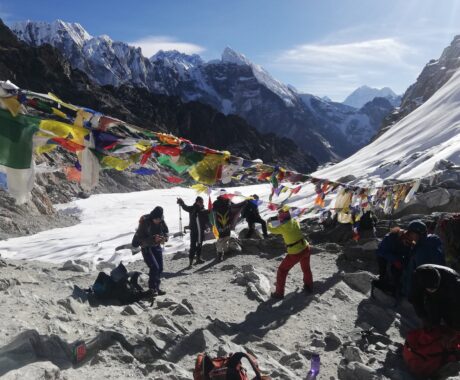
Everest Three High Passes Trek
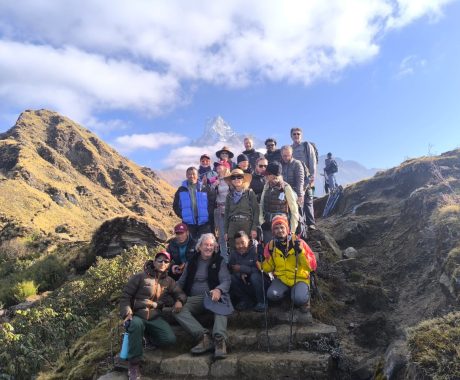
Mardi Himal View-Point Trek
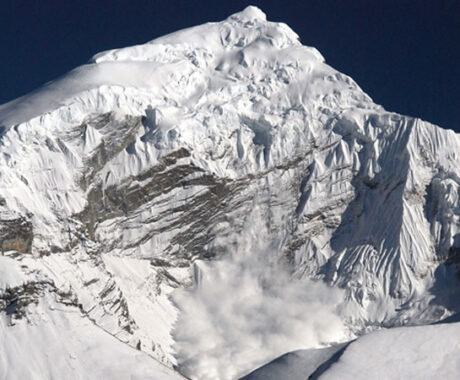
Chulu East Peak Climb & Semi Annapurna Circuit Trek
